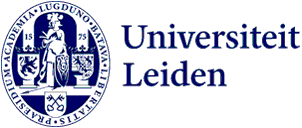
European grant to advance self-learning capabilities of quantum computers
A major grant for research into machine learning algorithms for quantum computers. With this ERC Consolidator grant, Vedran Dunjko and his colleagues hope to discover which real-world problems a quantum computer can solve faster than a normal one.
‘Quantum machine learning is often cited as one of the most promising applications of quantum computers, even though if you actually go through the literature, we have very little direct evidence for that,' says Vedran Dunjko, professor of Computer Science at the computer science institute LIACS and a lead of the Advanced Quantum Algorithms group at LIACS and physics institute LION.
Quantum computers and machine learning (closely related to AI or artificial intelligence), are the two major developments in computer technology. AI we now encounter almost daily in enthusiastic or fearful stories about ChatGPT, facial recognition software and fake photos (although AI has much more up its sleeves). In a nutshell, machine learning applications can solve tasks by learning from examples, rather than being programmed for them. With the right computer architecture and computing power, this proves to be very powerful.
Calculating faster and faster
Quantum computers work with quantum bits, or qubits. Where an ordinary bit in a computer is either 1 or 0, a qubit can be both at once. This technology is still under development: qubits in laboratories are fragile and usually need to be cooled to very close to absolute zero.
But quantum computers do promise dramatic acceleration of certain computational problems. In particular, they can simulate quantum mechanical systems, such as the structure of molecules or materials, within limited time. An ordinary computer would take thousands of years to compute this.
So what could be more obvious than to combine the two, and thus attack the very toughest quantum computing problems. 'Then we can ask different questions. Like for instance, in which phase of matter is this quantum system? Or is it a quantum spin liquid? These problems are very, very hard to compute,' Dunjko explains. Modern physics brims with such materials with exotic effects which regularly lead to new applications, from superconductors to extremely sensitive sensors.
Which problems can quantum machine learning solve?
If you can compute those systems in which quantum mechanical effects interact in complex ways, you can better understand both the materials and quantum machine learning itself. The combination could also potentially help interpret data from particle accelerators such as the Large Hadron Collider at CERN, where physicists study the forces between elementary particles. 'Certain parts of high-energy physics are very difficult to understand, for instance effects of the strong nuclear force,' Dunjko says. That elementary force of nature holds together protons and neutrons in the atomic nucleus, but is very difficult to calculate. Again because of the intense quantum mechanical interconnectedness.
'The fundamental question is: are there computational problems that you cannot solve with machine learning alone, but can solve with a quantum computer variant?' says Dunjko. He thinks so, 'based on the observations we've made over the last two years.' It may even already be possible on the relatively small quantum computers that are now being built.
The ultimate goal is to also prove those conjectures mathematically, leading to further understanding and a clear direction for quantum machine learning. Thanks to the €2 million ERC Consolidator Grant, Dunjko can now work on this for five years, ‘that is, three PhD students, two postdocs, and myself.’
Text: Bruno van Wayenburg
